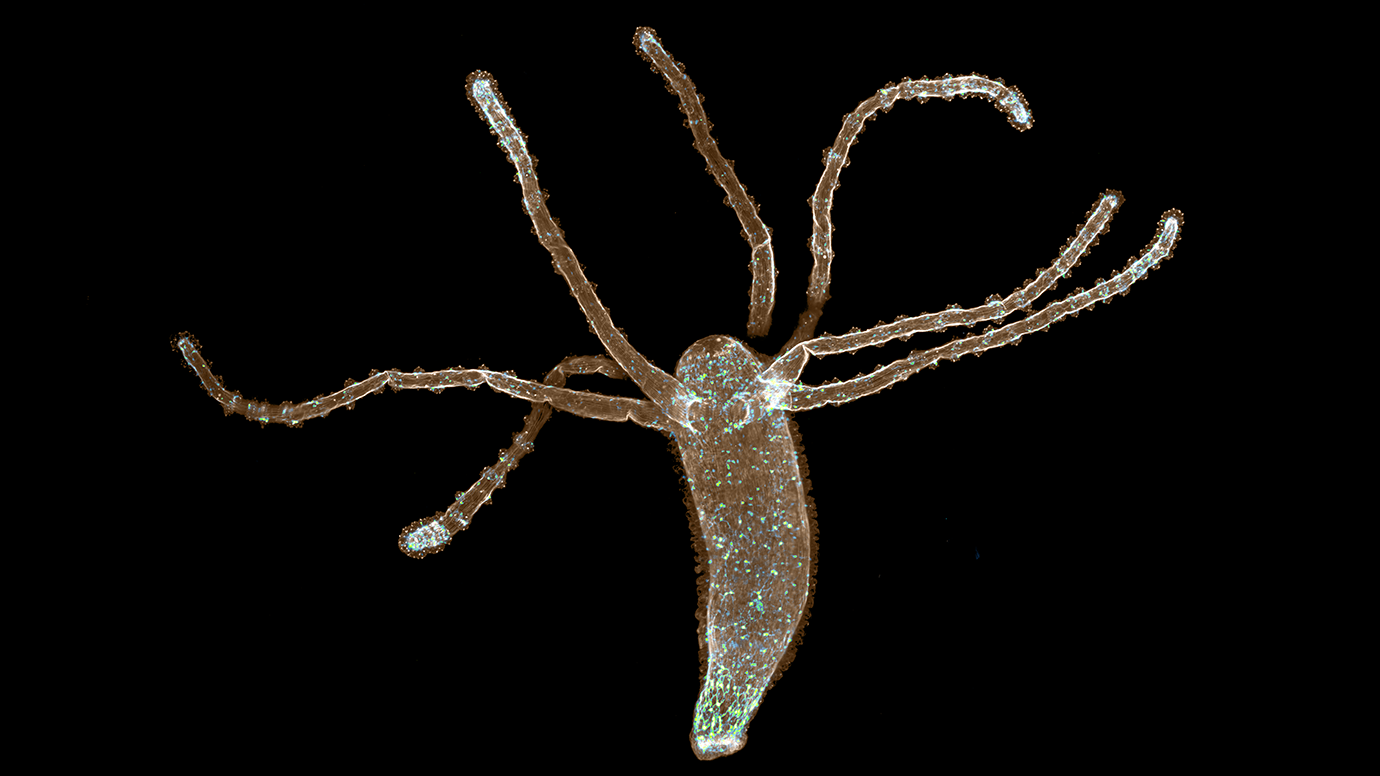

In this state, the young hydra is able to withstand periods of drought, cold, food shortages, or heat. In certain circumstances, particularly where seasonal drought is a regular feature, some species may also practice sexual reproduction which involves the production of a fertilized embryo enclosed in a toughened outer coating. When the young animal has fully developed, the two separate and the young hydra drifts off in the current to become established elsewhere. As this grows, a separate mouth and set of tentacles develops until eventually a replicate daughter cell of the parent hydra is produced. Most hydras reproduce by asexual means through a simple system of "budding-off." In this process, a small extension of the parent animal forms on the body wall. They grow only about 0.4 inches (10 millimeters) long and eat even tinier aquatic animals. In other situations, for example in defense, the nematocysts may be shorter and often bear small spines some may also contain a toxic substance which is injected into the attacking animal to deter or stun it. Hydra are a group of invertebrates that look like tiny tubes with tentacles protruding off one end. Once this has been completed, the captured prey-often small crustaceans-are grasped by the tentacles and passed down towards the mouth. When the animals is feeding, most of the nematocysts that are released are hollow and elongate, their purpose being to trap and entangle prey.

When the animal is feeding or is alarmed, the cnidocytes are triggered to release the nematocysts. Most have an oval shaped base, attached to a long threadlike structure. The latter vary in shape according to their required purpose. The tentacles contain a large number of specialized cells called cnidocytes, which contain stinging structures known as nematocysts. The hydra dines on meals of one-celled animals, water fleas, and seed. These animals contain a lot of vertical folds in the body, which increase the area for food absorption. Corals and sea-anemones are also related, though not so closely. A hydra can regrow like a plant propagated from cuttings or from seeds. There are many colonial animals, such as Obelia, that are related to Hydra. It was as green as a plant, yet it could move like an animal. They can be found in most unpolluted freshwater ponds, lakes and streams in the temperate and tropical regions by gently sweeping a collecting net through weedy areas. Hydras are predatory animals belonging to the phylum Cnidaria and the class Hydrozoa. It was uncertain whether the hydra was a plant or an animal. Hydra is a genus of simple, fresh-water animals possessing radial symmetry. The bulk of the body is taken up with the large intestinal cavity. Long tentacles surround an opening that is used for both eating and going to the bathroom. If a hydra is cut in pieces each piece will turn into a perfect hydra.

The body stalk is not encased in a hard protective layer, and the animal is therefore able to flex and bend. This is surrounded by a ring of tentacles whose length varies according to the species in question. The main body stalk is a simple, erect tube-like arrangement, at the top of which is the mouth.


 0 kommentar(er)
0 kommentar(er)
